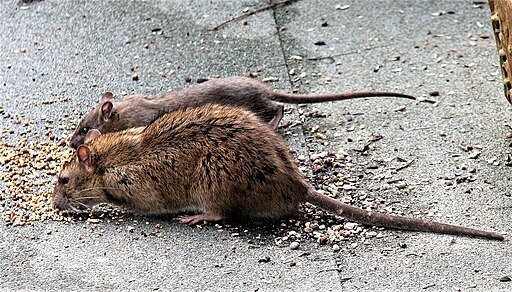New York City has one of the highest populations of brown rats in the U.S. According to New York pest control company MMPC, there are approximately 3 million rats in the city as of 2023, an increase of 42% in the past decade.
Rodent Contraceptives
Many creative ways have emerged to fight rat infestation in the city, and some politicians propose city and statewide measures to do more. New York lawmakers suggest more humane ways to drive down the rat and rodent population. They consider contraception and a ban on glue traps as alternatives to poison or a slow, brutal death.
The idea to distribute rat contraceptives got fresh attention in the city government on April 11 after an escaped zoo owl, called Flaco, was found dead due to rat poison. City Council Member Shaun Abreu proposed a city ordinance establishing a pilot program for controlling millions of rats that lurk in subway stations and empty lots. As the chair of the Committee on Sanitation and Solid Waste Management, Abreu believes contraceptives are more ethical and humane than other methods.
Called ContraPest, the contraceptive is contained in salty, fatty pellets that are scattered in rat-infested areas as bait. It targets ovarian function in female rats and disrupts sperm cell production in males.
Rat exterminators in New York use snap and glue traps to kill the pests. They also use poisons that make them bleed internally and carbon monoxide gas that can suffocate them in caves. Some hobbyists train their dogs to hunt rats and rodents.
Film and television actor Rashad Edwards, owner of pest management company Scurry Inc., believes carbon monoxide is the best method for dealing with rodents. He attempts to use the most humane method possible, and carbon monoxide slowly euthanizes the pests and kills them. He also avoids using rat poison whenever possible since it is dangerous and torturous to the rodents.
Meanwhile, some lawmakers in Albany are considering a statewide ban on glue boards. These traps can also ensnare small animals that land on their surface.
Edwards opposes banning sticky traps since he uses them on other pests, like ants, to reduce overall pesticide use. When these insects enter a house, he uses sticky traps to locate where they are most often passing by. This method helps him narrow zones of pesticide zones so he does not have to spray the entire place.
Growth of Rat Population
A female rat typically gives birth to six litters a year consisting of up to 12 rat pups, although 5-10 pups are more common. Each rat reaches sexual maturity after nine weeks, which means that the rat population can swell from two rats to around 1,250 in one year, potentially growing exponentially.
Theoretically, a pair of rats can produce almost half a billion descendants in three years. In reality, however, this would never happen. While the speed with which rats breed is frightening, many factors help to stop a population from spiraling out of control. There are a lot of factors, such as natural predation, disease, scarcity of food and shelter, in-fighting, and pest control.
For this reason, pest control experts have always recommended the importance of prevention and recognizing the early signs of a rat problem. Weather and favorable environmental conditions can be blamed for rising rat populations, although rodents may not need extra help from nature to increase their numbers.
RELATED ARTICLE: You Dirty Rat? Rats Show Empathy, Save Each Other From Drowning
Check out more news and information on Rats in Science Times.















